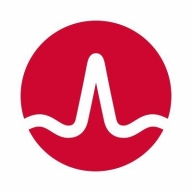

VMware Aria Operations and CloudStack both compete in the cloud management and virtualization domain. VMware Aria Operations seems to have the upper hand with its intensive monitoring and predictive analytics, which provides a proactive approach to IT management.
Features: VMware Aria Operations offers robust monitoring and management tools that allow users to collect data and use real-time analytics to adjust policies for optimized performance. Its dynamic thresholding and predictive analytics help anticipate and mitigate potential issues. CloudStack provides strong multi-hypervisor support and scalability, catering to diverse cloud environments. Its API integration facilitates diverse operations and supports different hypervisors efficiently.
Room for Improvement: VMware Aria Operations could enhance its usability by simplifying the interface and improving third-party tool integration. Users suggest the need for more intuitive reporting and automation features, along with expanded documentation for customizations. CloudStack users recommend interface improvements and enhanced documentation to better address integration capabilities and user feedback during deployment.
Ease of Deployment and Customer Service: VMware Aria Operations supports both on-premises and hybrid cloud environments, presenting users with flexible deployment choices. It generally receives positive feedback for customer service, though technical support experiences may vary. CloudStack also benefits from a strong community support structure and offers several deployment models, including public cloud capabilities, although professional support could be expanded for complex setups.
Pricing and ROI: VMware Aria Operations can be expensive, particularly for large deployments, but it promises a strong return on investment by optimizing operational efficiency and minimizing downtime. Licensing options are varied and should be closely aligned with business needs. As an open-source platform, CloudStack eliminates licensing fees, presenting a cost advantage, though there might be expenses related to dedicated support and additional features. This flexibility and cost-effectiveness make it appealing for organizations aiming to manage expenses.
| Product | Market Share (%) |
|---|---|
| VMware Aria Operations | 6.7% |
| CloudStack | 3.9% |
| Other | 89.4% |


| Company Size | Count |
|---|---|
| Small Business | 13 |
| Midsize Enterprise | 6 |
| Large Enterprise | 12 |
| Company Size | Count |
|---|---|
| Small Business | 63 |
| Midsize Enterprise | 62 |
| Large Enterprise | 278 |
VMware Aria Operations is a high-ranking virtualization management and cloud management tool that automates and simplifies IT management to the applications it supports. It achieves this through full-stack visibility from physical, virtual, and cloud infrastructure. The product allows users to enable self-driving IT operations management across private, hybrid, and multi-cloud environments. This is conducted with the unified operations platform that delivers continuous performance, capacity and cost optimization, and integrated compliance through artificial intelligence (AI) and machine learning (ML), and predictive analytics.
VMware Aria Operations Use Cases
VMware Aria Operations has several use cases, some of which include:
VMware Aria Operations Features
The product has various features which users can utilize. Several of the features that the 2022 version of VMware Aria Operations introduced include:
VMware Aria Operations Benefits
VMware Aria Operations brings various benefits to the organizations using it. Among them are the following:
Reviews from Real Users
Mohamed N., a tech lead VMware support engineer at a tech services company, appreciates VMware Aria Operations because it is easy to use, stable, and support is always available.
Mojtaba K., a senior system administrator at a comms service provider, values VMware Aria Operations due to the fact that its dashboards give you a glimpse of what is really going on in your virtualized environment.
We monitor all Cloud Management reviews to prevent fraudulent reviews and keep review quality high. We do not post reviews by company employees or direct competitors. We validate each review for authenticity via cross-reference with LinkedIn, and personal follow-up with the reviewer when necessary.